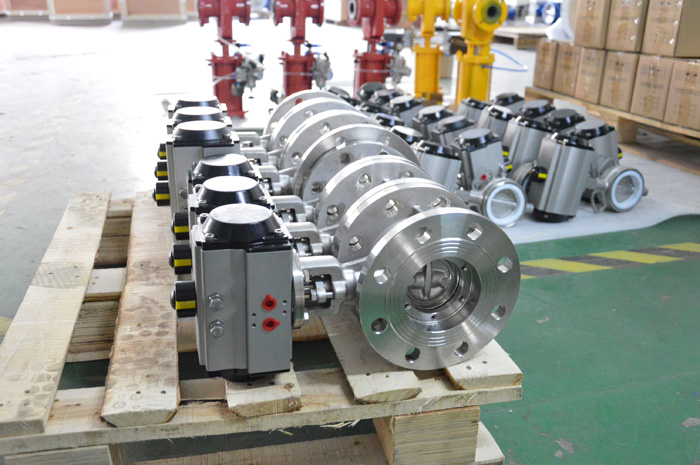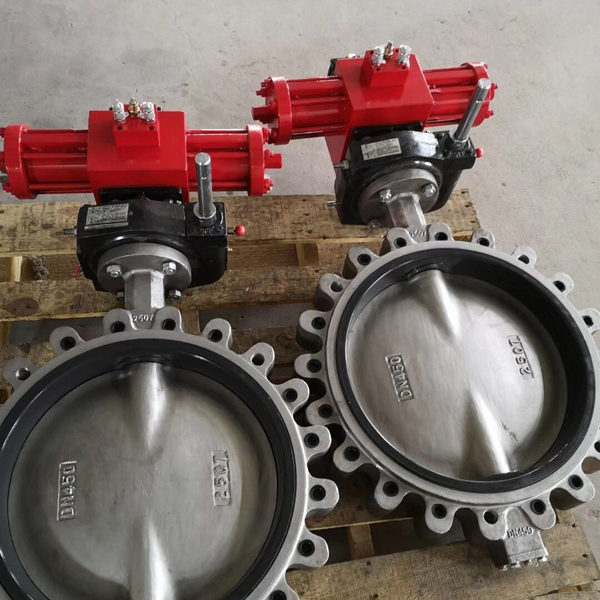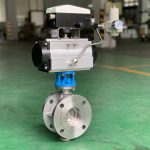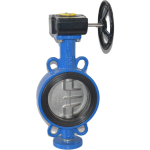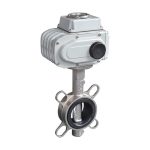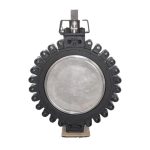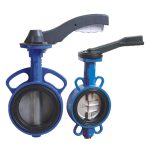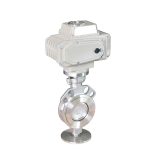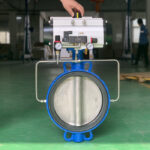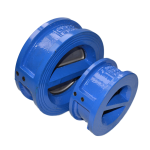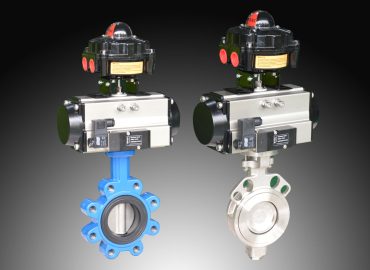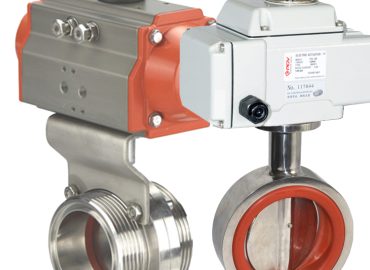There are several types of actuators available for butterfly valves, each offering unique features and benefits for specific applications. These Include electric actuators, pneumatic actuators, hydraulic actuators and hydrostatic actuators. Electric actuators are the most common type used and typically require an electronic signal to operate the valve. Pneumatic and hydraulic actuators rely on pressurized air or oil to move the valve disc, while hydrostatic gives precise control with minimal pressure requirements. Each type has its own advantages and disadvantages depending on the application — making it important to choose the right type of actuator to ensure optimum performance.
Introduction Butterfly Valve Actuator
There are a variety of actuators available for butterfly valves, with each offering different features and benefits. Electric actuators are the most common type used, as they require an electrical signal to open or close the valve disc. Pneumatic actuators, on the other hand, use pressurized air to move the valve disc and do not need an external source of power. Hydraulic actuators use pressurized oil instead of air and provide greater levels of control over the opening and closing process. Finally, hydrostatic actuators offer extremely precise control with minimal power requirements. Choosing the right type of actuator is important as it can make all the difference in terms of performance — allowing operations to run smoothly and efficiently while providing safety and convenience.
Overview of butterfly valves
Wafer Butterfly valve are a popular valve control system used in many industries. They are capable of providing tight shut-off and flow control in a single unit, making them effective for controlling fluids such as water, steam, oil, and other high viscosity liquids. Butterfly valves come in several different styles based on the materials used to construct the valve body and disc. The most commonly used butterfly valves are wafer type valve designs, while lug style and flanged butterfly valves are also available. Additionally, some butterfly valves feature an actuation element such as an electric actuator or pneumatic actuator which allows for remote operation of the valve. With their wide range of applications, butterfly valves offer great flexibility for many types of systems and processes.
Benefits of using actuators
Actuators are used to convert energy into motion, providing an efficient and effective way of opening or closing valves. Designed for use in applications with high torque or pressure requirements, actuators serve as the link between the controlling element and the valve itself. Actuators offer several advantages over manual operation, such as increased safety, reliability and efficiency. They are also capable of providing precise control over opening and closing speeds, allowing for greater accuracy in terms of flow rate and operation. Additionally, using an actuator reduces the risk of human error that can occur with manual installations.
Pneumatic Actuators
Pneumatic actuators are a type of device used to control and operate valves by converting the energy of pressurized air or gas into mechanical motion. They are commonly used in applications requiring fast actuation, such as irrigation systems, water treatment plants, and chemical plants. Pneumatic actuators butterfly valve provide reliable performance and excellent repeatability over time. They are also relatively easy to install and require little maintenance. Furthermore, pneumatic actuators can be controlled remotely with the use of switches or controllers for greater accuracy and flexibility. In terms of operation costs, pneumatic actuators offer a much lower cost than electric motors with similar capabilities. As a result, they remain the preferred choice for many industrial applications.

Description and operation
The basic components of a pneumatic actuator are a pressure chamber, piston and cylinder. A force is applied to the piston when pressurized air or gas is introduced into the chamber, which causes the piston to move in either direction. By controlling the pressure of the air or gas, the speed and force of movement can be precisely controlled. Depending on the type of actuator, operation may involve single-acting or double-acting cylinders, linear or rotary motions, and manual or automated controls. In general, pneumatic actuators provide high power output in combination with usability and convenience that make them well-suited for many industrial applications.
Advantages and disadvantages
Pneumatic actuators offer several advantages. They are simple and cost-efficient, with low maintenance requirements and a long service life. Additionally, their operations are quiet, clean, and safe to use in hazardous environments. One of the major disadvantages is that they require pressurized air or gas to run, which may not be available in remote locations. Additionally, they lack the torque capacity and accuracy of electric motors, though some have been designed to improve on these characteristics. Despite their limitations, pneumatic actuators remain a popular choice for industrial applications due to their reliable performance and excellent repeatability over time.
Electric Actuators
Electric actuators are mechanical devices used to convert electrical energy into linear or rotary motion. They provide precise control and can be found in a variety of industrial applications across many different industries. Depending on the type, electric actuator butterfly valve operations may include single-acting or double-acting cylinders, linear or rotary motions, and manual or automated controls. The main advantages of electric actuators over pneumatic versions are their higher torque capacity, greater accuracy, and efficient use of energy. Additionally, they do not require pressurized air or gas which makes them ideal for remote locations. The major disadvantages are that they are more expensive and have shorter service life compared to pneumatic actuators. Despite this, electric actuators remain a popular choice as they offer reliable performance in most industrial applications.

Description and operation
Electric actuators are mechanical devices used to convert electrical energy into linear or rotary motion. They can be found in a wide range of industrial applications, ranging from manufacturing and automation to robotics and laboratory experiments. Depending on the type, electric actuators may use single-acting or double-acting cylinders and can be operated in linear or rotary motions. Typically, electric actuator operations are carried out using manual or automated controls for precise control over the motions. When powered by electricity, these devices generate precise motor rotation which creates the desired linear or rotary output through an appropriate conversion mechanism such as a ball screw/nut, rack and pinion system, etc.
Advantages and disadvantages
Electric actuator butterfly valve offer several advantages over pneumatic versions, including higher torque capacity, better accuracy, and greater energy efficiency. They are also ideal for remote locations due to their need for electricity rather than pressurized air or gas. Unfortunately, electric actuators come with some drawbacks such as higher cost and shorter service life compared to pneumatic actuators. Despite these drawbacks, electric actuators remain a popular choice due to their reliable performance in most industrial applications.
Hydraulic Actuators
Hydraulic actuator butterfly valve are mechanical devices used to convert hydraulic energy into linear or rotary motion. They are most commonly found in automotive, agricultural, construction, and industrial application to move heavy objects in a controlled manner. They work in a similar way as electric actuators (Converting electrical energy into Linear or Rotary Motion) but instead use fluid pressure by using high-pressure pumps that create desired force according to the user’s requirements. They offer repeatable accuracy and can generate significantly more torque than either electric or pneumatic actuators and are perfect for applications that require predetermined power output on demand. However, hydraulic actuators come with some drawbacks such as higher cost, higher energy consumption, and environmental concerns related to disposal of hydraulic fluids after their service life is over.
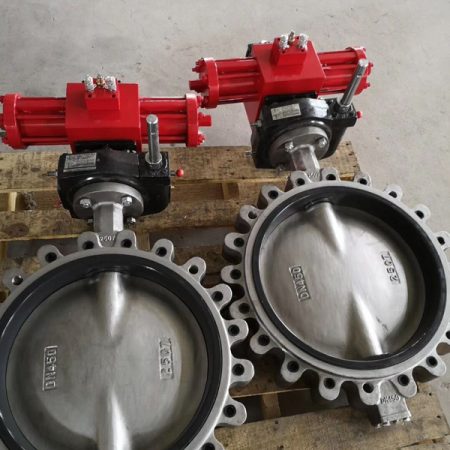
Description and operation
Description and operation of actuators involve the combination of several mechanical components to create a system that is capable of producing linear or rotary motion in response to a signal. Typically, actuators are composed of motors, cylinders, pumps, valves and other components that work together to produce the desired motion. In most cases, an input signal (electricity or compressed air) is used to move an output component (rod or valve). The output component then turns on/off the transmission valves and allows the flow of hydraulic or electric current. Actuator systems can also be combined with various types of sensors and feedback devices to achieve precision operation while controlling force or speed under varying conditions. With their versatility and ease-of-use, actuators are widely used in a variety of industries such as automotive, chemical processing, aerospace and robotics applications.
Advantages and disadvantages
The main advantages of hydraulic actuators are their high torque output, repeatability and reliability. Hydraulic actuators are capable of producing much higher torques than electric and pneumatic actuators, making them ideal for applications that require powerful motions. They also have a guaranteed precision level due to using oil-filled cylinders with built-in springs, which makes it possible to actuate with an extremely high accuracy. Furthermore, hydraulic actuators can provide continuous rotary or linear motion without any interruption or extra power source. On the other hand, the main disadvantages of hydraulic actuators are their relatively higher cost than electric or pneumatic counterparts, above-average energy consumption and environmental concerns related to disposal of hydraulic fluids after service life is over.
Hydraulic pneumatic and electric actuators
In the world of valve control and automation, Hydraulic, Pneumatic, and Electric Actuators are the epitome of precision, power, and performance. These devices play a crucial role in controlling valves, transforming a control signal and a source of energy into mechanical motion.
Hydraulic and pneumatic actuators are renowned for their ability to generate high forces in a straight line, making them ideal for applications that require significant thrust.
On the other hand, electric actuators, including stepper motors and electric linear actuators, provide circular or rotary motion. These actuators are known for their high precision, speed control, and efficiency.
Rotary actuators play a pivotal role in the valve industry, providing rotational motion to control valve elements such as ball, plug, and butterfly valves.
Each type of actuator has its unique advantages and is chosen based on the specific requirements of the application, including force, speed, precision, power source, and environmental conditions
Conclusion Butterfly Valve Actuator
In conclusion, butterfly valves are used in a wide range of applications that require quick and reliable operation while controlling the flow of gases or liquids through pipes. Depending on their application requirements, butterfly valves can be actuated by various types of actuators such as manual, electric, pneumatic, or hydraulic. Manual actuators are ideal for low-pressure operations while electric and pneumatically operated valves are usually employed in industrial applications with higher operating pressures. Lastly, hydraulic actuators offer superior performance in terms of torque output and repeatability but come at an increased cost compared to other types of actuators. Choosing the right type of actuator for a particular application is crucial for achieving optimal performance and maximizing cost efficiency.
